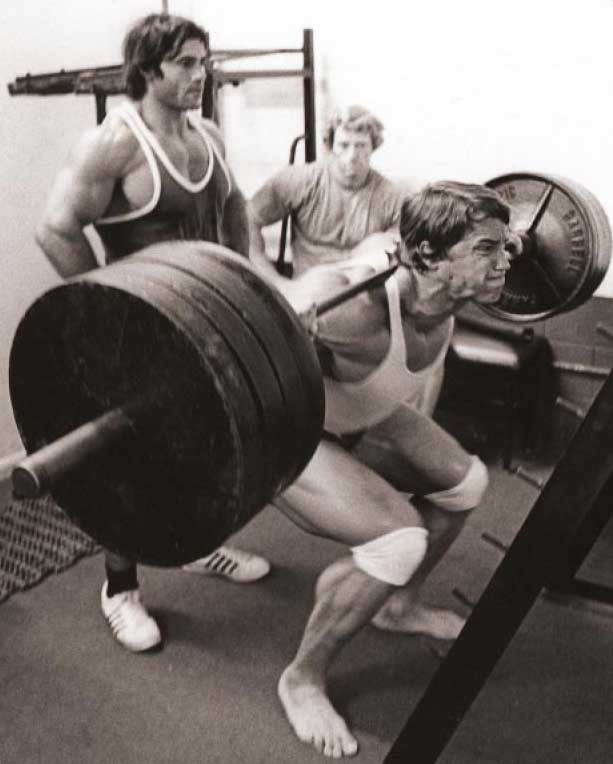by Sean St. Onge
So apparently I talk about shoes and feet a lot. I had to dial back into the Delorian to see when I last touched on shoe wear.
/blog/2013/12/10/the-three-ss.html
My previous blog (from last week) spoke of the concept of why trainers and coaches look to see your feet. Again it is simple...we all have foot fetishes.
BOOM. Just kidding. We like to actually observe the movement of the feet and toes to give us an idea of "who's F&$@# around," to quote my good buddy Dr. Vincent Brunelle. When it comes to training, specifically weight training, I do encourage my clients that feel comfortable training without shoes on, to do so.
But, what is the point? Is there a benefit? Or is this some kind of ruse that Sean likes to make everyone feel self conscious about- the size and smell of their feet so you feel like Frodo in the gym?
I have received the eyes of doom and looks of death when I have asked clients to remove their shoes. People have refused me as well. It did NOT impede me from my assessment, nor my abilities to provide my clients with exercises to get them to their goals, which is job number one.
I have also had my fair share of people under the belief if you take your shoes off you somehow will become more susceptible to dropping weights on your toes. As if, by some form of gravitation, your bare feet somehow transfer into free weight magnets. Or, my personal favorite, "it will hurt worse." As if a 3 ounce piece of felt and plastic will stop a 30 pound dumbbell and gravity from doing their thang. I think I will make time to find if there is a study done by the Strength and Conditioning Journal or New England Medical Journal of Science (yes I made up names of publications for this joke) to find if there is any merit to the idea that if your foot is in or out of a shoe what the major effects would be. Even more ridiculous, if such a study existed is that there would have to be a control group that would have smashed feet.
In my previous blog I expressed some of the benefits of "shoes off" for assessment purposes. Yet there is a benefit of training barefoot or with minimal shoes as well. It allows a better connection to your posterior muscle chain, especially when performing deadlifts, and squat variations.
Not everyone has full knowledge of proper footwear for their training. Whether it be distance running, cross training, weight lifting, dancing or boating, yes we as a culture have created the big money grab for all kinds of shoes. Yet there are specific shoes that are for specific movements and events. You wouldn't wear your best dress shoes or high heels to go running a 5K. Nor would you wear running sneakers to ballroom dancing lessons. Unless you wanted to do some break dancing...then, by all means, bust out the cardboard! "WE GONNA BREAK!!!!"
As it pertains to training and weight lifting, being minimal or having less of a heel in your shoe would prove beneficial to engage your posterior muscular chain. Most trainees tend to just have one or two pairs of sneakers and they are normally running shoes. Or worse, they were bought because the normal price of shoes is moderately high and they picked out what looks cool. The typical running shoe has up to a 2 inch block of padding between the floor and where your actual heel is set in the shoe. It is also pitched on an angle designed to absorb the repeated impact on the ground when running.
Any shoe with an incline in the rear of the shoe will put your body (specifically your hips) set up higher and on an angle thus forcing you, while trying to perform an exercise like a deadlift (swings, squats, lunges), to "sit" lower to angle your position properly for the right force and torque to complete the exercise without pain or over use of your lumbar spine/lower back.
A fellow and reputable strength coach recently echoed, "You can train ankle mobility until you're blue in the face, but if athletes wear shoes with huge heel-toe drops, you're swimming upstream." E. Cressey.
To sum it up, be mindful of what your footwear is for- be it running, strength training, or general exercise purposes. Do not feel the need to buy every shoe imaginable either. Find what works and feels right for what you do. This process may take a while, although it may be cost effective to try and utilize one pair of sneakers for all of your training, it would be beneficial to have a couple different pairs.
You know the old adage..."if the shoe fits."
Next time, Dr. Mark Enander, our resident Podiatrist, and I will cover many similar topics and more foot burning questions in my interview with him. Thanks all.
SOAP BOX...out.






